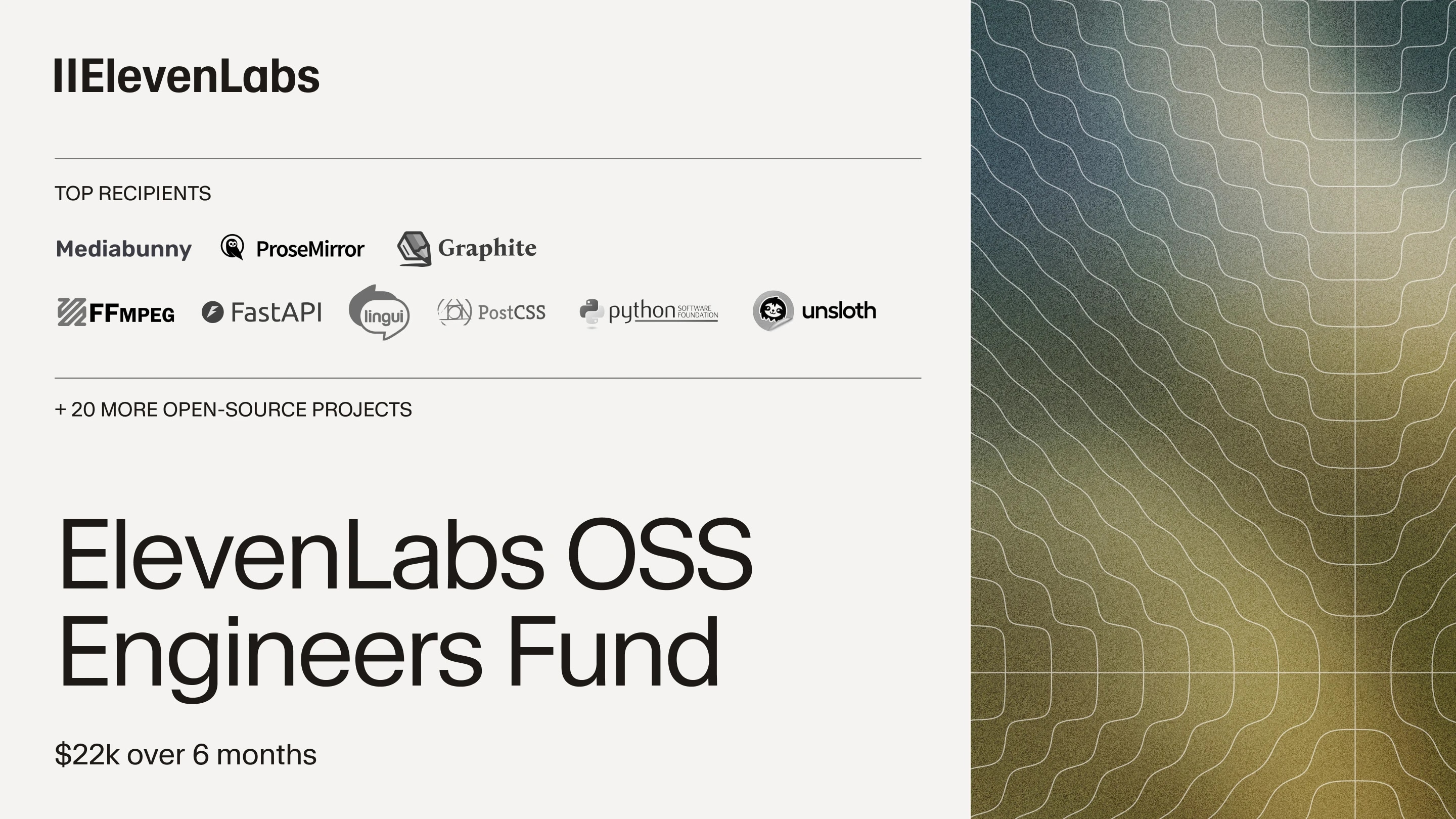
ElevenLabsでプロフェッショナルなボイスクローンを作成する7つのヒント
ElevenLabsを使ってプロフェッショナルなボイスクローンを作成するための7つの重要なヒントを学びましょう。
ボイスクローンは、SFの好奇心から制作の定番へと進化しました。ゲームのローカライズ、ブランドボイスの構築、または大規模なオーディオブックの制作において、高品質なAI音声はワークフローを効率化し、クリエイティブな範囲を広げます。
ElevenLabs テキスト読み上げ技術により、機械学習の知識がなくてもスタジオ品質の結果を得ることが可能です。しかし、最良のモデルでも、厳密な入力に依存します。
1. 完璧な録音から始める
生成オーディオでは、「ゴミを入れればゴミが出る」が特に重要です。質の低いトレーニングデータは音質を制限し、欠陥のあるプロンプトは、よく訓練されたモデルでも満足のいく結果を得られません。
高品質なトレーニングデータと正確なプロンプトは、良い生成オーディオ出力に不可欠です。どちらかの段階で入力が不完全だと、最終結果が大きく損なわれます。
| Requirement | Why it matters |
|---|---|
| Quiet, treated room (no HVAC, pets, traffic) | Model learns background noise as part of the voice |
| Cardioid condenser or broadcast dynamic mic | Off-axis rejection and low self-noise |
| 44.1 kHz, 16-bit (or better) mono WAV | Matches ingestion spec and preserves fidelity |
| Pop filter / windscreen | Reduces plosives and low-end rumble |
| Flat EQ, no compression | Preserves natural dynamics |
必ず最初に短いルームトーンを録音してください。DAWにノイズが見える場合は、1行も読む前に修正してください。
2. 表現豊かで多様な音声をキャプチャする
ElevenLabsは、人間の音声の微妙なディテール、感情、ペース、プロソディを再現する能力がありますが、この再現の質は、モデルのトレーニングに使用されるオーディオデータ内のこれらの要素の存在と変化に直接依存します。
つまり、AIはトレーニングプロセスで示されたものしか効果的に再現できません。データセットに表現の変化が欠けていたり、平坦で単調な音声が含まれている場合、結果として得られるボイスクローンも同じ特性を反映する可能性があります。
含めるべきもの:
- 中立的なナレーション
- エネルギーが変化するダイアログ
- 笑顔、ささやき、強調
Insert short silences (0.3–0.5s) between lines to teach natural pause behavior. Avoid vocal fry or throat clearing unless you want it replicated.
For character work, record multiple “mood passes” (e.g., calm, excited, distressed) to give the Style slider something real to interpolate.
3. データセットをクリーンにする
録音後:
- Manually gate and de-click, or use tools like iZotope RX
- Remove repeated takes, stutters, filler words, and disruptive breaths
- Normalize to –3 dBFS, but avoid compression
目標:すでにリリース準備が整ったように聞こえるデータセット。その品質がすべての出力に反映されます。
4. 一貫した条件を維持する
最初のプロフェッショナル ボイスクローンを録音したとき、異なる場所で録音した音声ファイルをいくつか提供しましたが、声は声だと思っていました。最終バージョンでは、すべて自宅のオフィスで、同じスクリプトを読みながら録音しました。それでも完璧ではありませんでしたが、即席のボイスクローンよりはるかに良くなりました。
Ryan Morrison Professional Voice Clone (PVC)
Ryan Morrison Instant Voice Clone (IVC)
録音中にマイクチェーンを切り替えると、モデルが混乱します。
複数セッションのプロジェクトの場合:
- マイクの配置とゲインを固定する
- 声の変化を避けるため、同じ24〜48時間内に録音する
- 古い録音と新しい録音を使用する場合は、別々の声をトレーニングし、Voice Mixingでブレンドする—単一のクローンを希釈しない
5. 適切なデータ量を提供する
ボイスクローンでスピードと品質のバランスを取るためには、適切な量のトレーニングデータを提供することが重要です。以下の表は、意図した用途に基づくデータの長さのガイドラインを示しています。
| Use Case | Minimum | Sweet Spot | Why |
|---|---|---|---|
| Quick demo / scratch track | 2–3 min | 5 min | Fast iteration |
| YouTube / explainer videos | 5 min | 10–15 min | Smooth cadence, good style range |
| Audiobooks / podcast host | 10 min | 20–30 min | Natural inflection over hours |
| Multilingual brand or character | 15 min | 30–45 min per language | Cross-language continuity |
約60分以上は効果が薄れる可能性があります。微妙なニーズには、アクセント、感情、年齢に合わせたサブクローンを構築してください。
6. ElevenLabsの設定を調整する
ボイスクローンでスピードと品質の最適なバランスを取るためには、適切な量のトレーニングデータを提供することが重要です。以下の表は、声の使用方法に基づく推奨データ長を示しています。
| Setting | Effect | Typical Range |
|---|---|---|
| Stability | Lower = more variation; higher = consistent delivery | 0.4–0.7 for narration; 0.2–0.4 for dialog |
| Similarity Boost | Controls how strictly timbre matches training audio | ≥ 0.75 for branded voices |
| Style Exaggeration | Amplifies emotional cues in the dataset | 0.1 for subtle; 0.3–0.5 for expressive |
| Accent / Latent Channels | Advanced: blends multiple voices or traits | Use for custom hybrid personas |
プロのヒント: 調整後に「ゴールドプリセット」を保存してください。章の読み上げやコマーシャルスポットに一括適用できます。
7. 実際のシナリオでストレステストを行う
ナレーションテスト: Paste a 500-word script with names, numbers, and dialogue. Listen for pacing or pronunciation issues.
Dialog test: Alternate clones in a chatbot or game engine. Evaluate timing and emotional contrast.
Multilingual test: For bilingual voices, run mixed-language lines. Assess smoothness in code-switching.
Play output at different LUFS targets to catch any mastering-stage artifacts. Maintain a feedback log—small dataset tweaks often outperform big setting changes.
Managing your voice clone library
Naming: Use [Project]_[Actor]_[Emotion]_[v1] Example: RPG_TavernKeeper_Jovial_v1
Version control: Clone before major edits to A/B compare changes.
Metadata: Record mic model, room setup, date, and rights-holder—essential for compliance.
Archival: Back up raw WAVs and training bundles (e.g., to S3 or LTO) in case of future re-training on new engine versions.
Real-world use cases
Voice cloning opens up a wide range of possibilities across different industries. Let's take a look at some specific examples of how this technology is being used and the benefits it provides
| Industry | Example | Benefit |
|---|---|---|
| Audiobooks | One narrator, localized into 6 languages | Avoids rehiring multiple voice talents |
| Gaming | NPCs change tone based on gameplay | Infinite variation without new sessions |
| Advertising | Always-on brand voice for promos | No scheduling delays |
| Accessibility | Consistent voice for video descriptions | Increases user comfort and trust |
Conclusion and next steps
A great voice clone is equal parts engineering and direction—clean input, thoughtful design, and precise tuning.
Ready to hear your own?
- Sign in to ElevenLabs Studio (free tier available)
- Upload 5–6 segments of 10 minute samples of high-quality audio
- Generate first outputs in seconds
- Refine with Stability and Style settings
Need more control? Upgrade for voice mixing, multilingual cloning, and longer content generation. Keep iterating. The voice you imagine is within reach.
ElevenLabsチームによる記事をもっと見る


Integrating external agents with ElevenLabs Agents' voice orchestration
Patterns for integrating ElevenLabs voice orchestration with complex and stateful agents

.webp&w=3840&q=95)
.webp&w=3840&q=95)